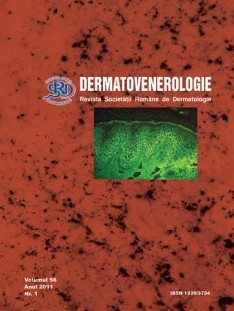Studii clinice si experimentale
Importanta corelatiilor clinicopatologice in diagnosticarea limfoamelor cutanate la pacienti varstnici
Introducere
Diagnosticul limfoamelor cutanate (LC) este adesea dificil, din cauza suprapunerii tabloului clinic cu caracteristicile dermatozelor benigne sau a discordantei dintre constatarile clinice si patologice. Incidenta limfoamelor cutanate (LC) creste considerabil cu varsta.
Obiectivul studiului a fost ilustrarea importantei pe care o are monitorizarea pacientilor varstnici cu dermatoze cronice si necesitatea corelatiilor clinico-patologice în diagnosticul LC.
Pacienti si metoda
Datele clinice si histo-patologice a 28 pacienti din evidenta Clinicii Universitare de Dermatologie si Venerologie Timisoara (2005-2010) cu diagnostic confirmat de LC, au fost examinate si reclasificate în conformitate cu Clasificare WHO-EORTC. Examinare histologica a fost efectuata pe sectiuni colorate hematoxilina-eozina si imunohistochimic.
Rezultate
Au fost inclusi 28 de pacienti (15 barbati; 13 femei), varsta medie - 60 de ani. 75% (n=21) au fost initial diagnosticati cu diferite dermatoze cronice în institutiile de îngrijire primara. 71% (n=15) din diagnosticele eronate au fost la pacienti peste 60 ani. Dupa evaluarea clinica si histopatologica, conform criteriilor WHO-EORTC: 82% (n=23) au fost limfoame cutanate primare (PCL) si 18% (n=5) au fost limfoame cutanate secundare (SCL). 18 pacienti (78% din PCL) au prezentat limfoame cutanate cu celule T (LCTC), din care 14 (78% din CTCL) au fost micozis fungoides si 5 pacienti (22% din PCL) au prezentat limfoame cutanate cu celule B (LCBC).
Limite
Acesta este un studiu descriptiv efectuat pe un numar limitat de cazuri.
Concluzii
Este necesara urmarirea dermatozelor cronice la pacientii varstnici si prelevarea de biopsii repetate la cei cu leziuni suspecte. LC sunt rare si extrem de variabile iar diagnosticul definitiv este deseori întarziat.


